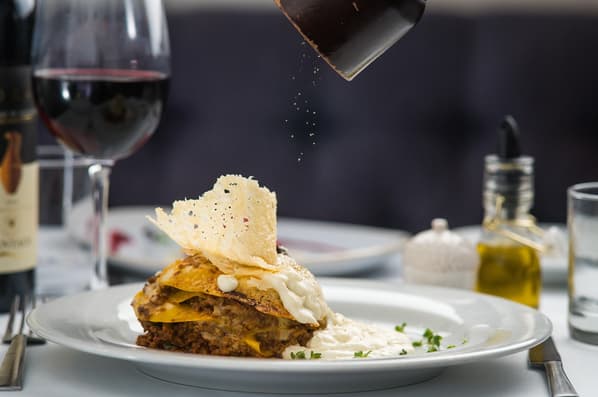There’s something magical about discovering a city through its flavors. Whether it’s the aroma of freshly brewed coffee drifting from a corner café in Lisbon or the sizzling sound of street food in Bangkok, food has the power to tell the story of a place in ways words alone cannot. A restaurant and café travel blog captures this magic, serving as both a guide and a personal diary for those who believe exploring new cuisines is as essential as sightseeing.
For many travelers, it’s not enough to simply take photos of landmarks—they want to taste the culture. A blog that documents culinary journeys offers readers the chance to join in that experience, discovering hidden cafés, family-run bistros, and gourmet dining spots tucked away from tourist crowds. And while some travelers plan their trips around museums or beaches, others plan them around the best latte in the city or the perfect plate of pasta. Platforms like OneDateIdea.com even help travelers pair these culinary experiences with romantic or special moments, making food an essential part of unforgettable journeys.
A well-crafted restaurant and café travel blog blends storytelling, photography, and practical tips into an irresistible mix. It inspires readers to step outside their comfort zones—perhaps trying a dish they’ve never heard of or visiting a neighborhood they might have skipped otherwise. It’s more than just a collection of food reviews; it’s a window into the heart of each destination.
The Allure of Culinary Storytelling
At the center of every restaurant and café travel blog is the art of storytelling. Food alone isn’t enough—it’s the stories behind it that create connection.
For example, a post about a tiny café in Kyoto might detail the history of the tea served there, tracing its origins to a family farm in the countryside. An article on a Parisian bistro might include an interview with the chef, revealing how their grandmother’s recipes inspired the menu. These narratives transform a simple dining experience into a cultural immersion.
The visual component is equally important. High-quality photos of steaming coffee cups, artfully plated meals, and cozy interiors give readers a sense of place. A travel blogger’s lens captures not just the food but also the atmosphere: the laughter of friends sharing dessert, the sunlight pouring through stained glass windows, or the handwritten chalkboard menu that changes daily.
Successful blogs often mix destination diversity—featuring both famous dining spots and hidden gems. One post might spotlight an award-winning fine-dining restaurant in New York, while the next introduces a family-owned café in a small Italian village. This variety keeps readers engaged and inspired to explore both the grand and the humble sides of global gastronomy.
An interesting element to add is experiential guides—combining restaurant visits with other activities. For example, pairing a breakfast review with a walking tour of the neighborhood, or recommending a café as the perfect spot for travelers to plan their day. Some bloggers even collaborate with platforms like OneDateIdea.com to suggest date-friendly dining spots, helping couples find the perfect romantic setting during their travels.
Turning Reviews into Travel Itineraries

One of the most practical aspects of a restaurant and café travel blog is its ability to help readers plan their trips. Many travelers are overwhelmed by the number of dining options in any given city—especially when online reviews conflict. A trusted blog can cut through the noise, offering curated recommendations based on first-hand experiences.
The best bloggers understand that food is part of a bigger travel narrative. A blog post might not only review a café but also share how it fits into a day’s itinerary:
- Morning: Start with a cappuccino and croissant at a riverside café.
- Midday: Explore a local food market, sampling cheeses and handmade chocolates.
- Evening: Dine at a rooftop restaurant with panoramic city views.
This structure makes the blog a ready-made travel companion, allowing readers to follow along without hours of research.
Cultural context is another key ingredient. A review of a Greek taverna might explain why certain dishes are served during specific holidays, while a post on a Moroccan café could detail the traditional tea-pouring ritual. These insights turn an ordinary meal into an educational experience, deepening the traveler’s appreciation of the destination.
Some bloggers go further, offering thematic journeys—like “The Best Cafés for Writers in Europe” or “A Tour of Michelin-Starred Restaurants in Asia.” These themes make the content more memorable and help attract niche audiences. For couples, guides that merge romance and food are particularly popular, which is why collaborations with travel and date-planning sites such as OneDateIdea.com are a natural fit. Readers not only get recommendations but also ideas for special moments to share.
Conclusion
A restaurant and café travel blog is more than a collection of food reviews—it’s a passport to cultural exploration, a diary of flavors, and a guide for anyone who believes that tasting the world is just as important as seeing it. By blending storytelling, photography, and practical travel advice, such blogs inspire readers to venture beyond the obvious and savor the authentic experiences that each destination offers.
Whether you’re recommending a hidden café tucked down a quiet alley or a world-class restaurant with a months-long waiting list, your blog becomes a trusted companion for fellow travelers. And when paired with tools like OneDateIdea.com, it can even help couples turn a simple meal into a cherished travel memory.
In the end, the true beauty of a restaurant and café travel blog lies in its ability to connect people—not just to the food they eat, but to the stories, traditions, and communities that make every bite worth remembering.